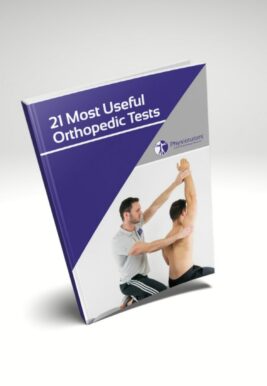



Hip microinstability is a relatively new clinical entity of hip pathology in young patients.
Normal hip stability, as with other joints such as the shoulder, depends on the relationship between bony structures, muscles, and ligaments. In the hip joint that would be the acetabulum, its’ labrum, the ligamentum teres, the capsuloligamentous complex, and various muscles around the joint.
While a direct cause for hip microinstability may not always be identifiable, both traumatic and atraumatic onsets are described in the literature. The pathophysiological mechanism is assumed to be related to repetitive axial and or rotational loading of the hip in the presence of anatomic abnormalities of the previously listed structures.
Common assessments next to a thorough patient history include Hyperlaxity assessment using the Beighton Score, and lately special tests for the condition have been described and evaluated on their validity:
According to Hoppe et al. (2017), The HEER test has a sensitivity of 71% and a specificity of 85,1%. This is the first study to evaluate this test on its validity and has a couple of limitations so the results should be used with caution until further validation has taken place which is why we give it a moderate clinical value.
To conduct the test the patient lies in supine position with the legs dangling free over the edge of the bench. The patient is asked to flex the unaffected leg and hold it in a flexed position. The affected leg is hyperextended and moved into external rotation by the examiner. A positive test results in anterior hip pain.
Other orthopedic tests that assess microinstability of the hip are:








To provide the best experiences, we and our partners use technologies like cookies to store and/or access device information. Consenting to these technologies will allow us and our partners to process personal data such as browsing behavior or unique IDs on this site and show (non-) personalized ads. Not consenting or withdrawing consent, may adversely affect certain features and functions.
Click below to consent to the above or make granular choices. Your choices will be applied to this site only. You can change your settings at any time, including withdrawing your consent, by using the toggles on the Cookie Policy, or by clicking on the manage consent button at the bottom of the screen.
Download our free physiotherapy app with all the knowledge you need.